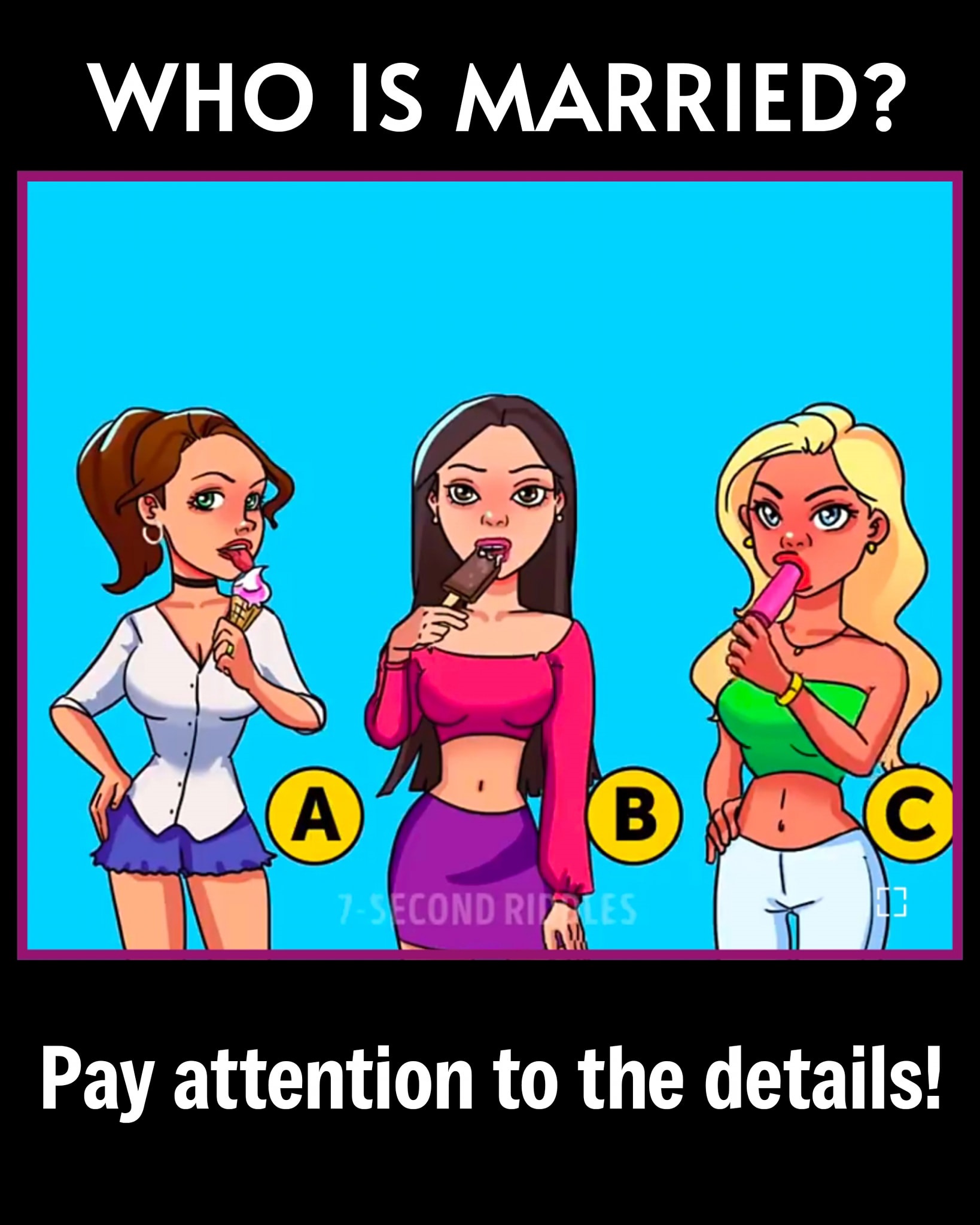Not every brain teaser is based on numbers, riddles, or logic problems—some of the most intriguing ones simply test how closely you can observe a scene. In this case, the challenge is wrapped in a seemingly easy question: “Who is married?” You’re shown an image featuring three stylish women labeled A, B, and C, and they’re all enjoying some ice cream on what appears to be a casual day out.

At first glance, nothing about their appearance screams anything about their marital status, and that’s exactly what makes this puzzle so clever. It tricks you into relying on assumptions and stereotypes unless you take a closer look. Let’s walk through the image and break down the clues one by one. Woman A, on the left side of the picture, has brown hair that’s tied up neatly. She’s wearing a crisp white button-down shirt paired with a purple skirt and holding a pink ice cream cone in her left hand. Woman B, standing in the center, has long black hair. She’s wearing a trendy pink crop top along with a purple skirt, and she’s eating a chocolate popsicle with her right hand.
Finally, Woman C, on the right, has long wavy blonde hair and is wearing a green crop top and white pants. She’s holding a red-and-pink popsicle with her left hand. All three women appear fashionable, confident, and carefree. So how do you figure out who’s married? It’s not about their clothing, hair, or attitude—those are red herrings. This puzzle relies on spotting one subtle detail that people often overlook: a wedding ring. In many cultures, especially across the United States and Europe, a wedding ring is traditionally worn on the fourth finger of the left hand. It’s a nearly universal indicator of marriage. So let’s zero in on that one clue.
Starting with Woman A, she’s holding her ice cream in her left hand, and if you look closely, you’ll notice a ring on her left ring finger. That’s the kind of detail this entire puzzle hinges on. It’s not flashy, but it’s clearly there. That ring is a traditional symbol of being married. Now let’s move on to Woman B. She has no rings on either hand. Her hands are clearly visible, and there’s no jewelry that even hints at a wedding band. While her outfit is bold and modern, nothing about her look suggests she’s married—at least not visually. Woman C has more accessories than the other two; she’s wearing earrings and a bracelet, and she’s also holding her popsicle in her left hand. However, her left ring finger is bare—no wedding ring there either.
Despite her fashionable appearance, she doesn’t show the classic sign of being married. So when you piece all of this together, the answer becomes clear: Woman A is the only one wearing a ring in the traditional spot associated with marriage. That small but meaningful detail is the entire key to solving this brain teaser. It doesn’t matter how someone dresses, what kind of ice cream they like, or how they present themselves—this is all about observation, not assumption. The brilliance of this puzzle lies in its simplicity. It doesn’t rely on trick questions or abstract thinking, just your ability to notice a tiny but telling visual cue. It also serves as a subtle reminder that the smallest details can carry the most significant meaning. If you noticed the ring on Woman A right away, give yourself a pat on the back. You have a keen eye and strong attention to detail, which are valuable skills not just for puzzles but in everyday life. And if you missed it the first time, don’t worry. That’s the whole point of challenges like this—to sharpen your observation skills and train your brain to see beyond the obvious. With each one you attempt, you get better at spotting the little things that make all the difference. So next time you’re faced with a visual riddle, remember: look closer.





